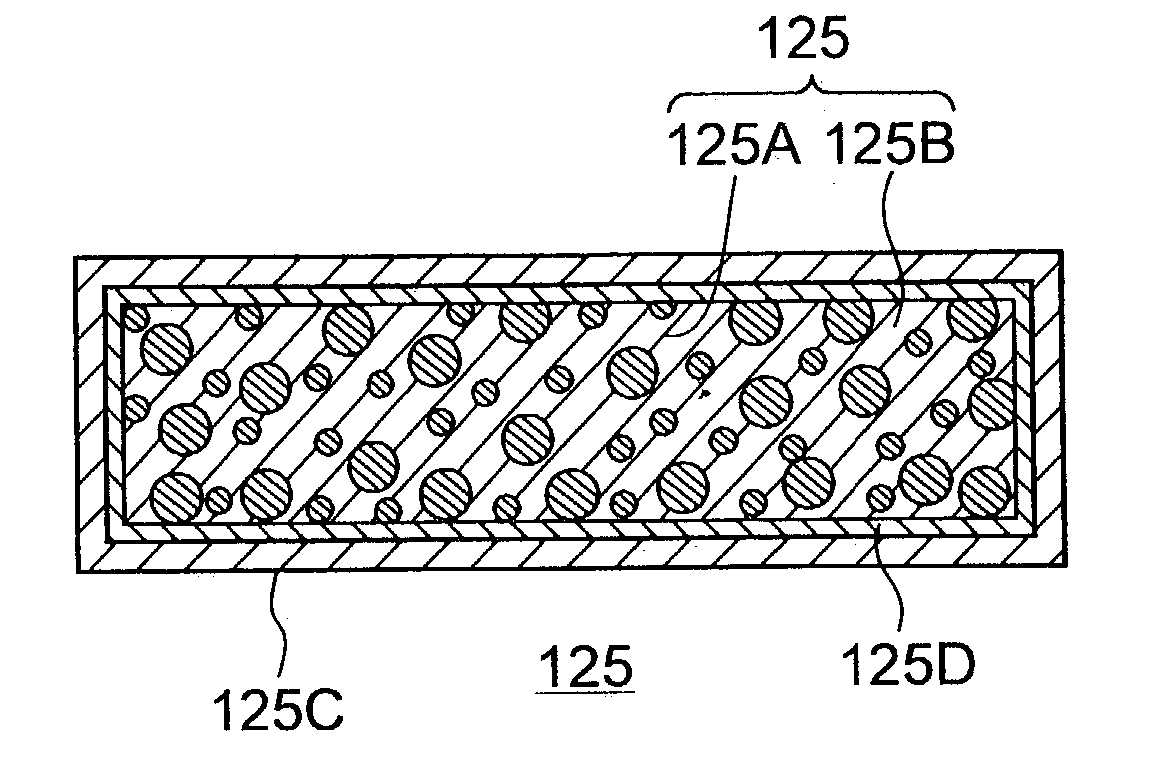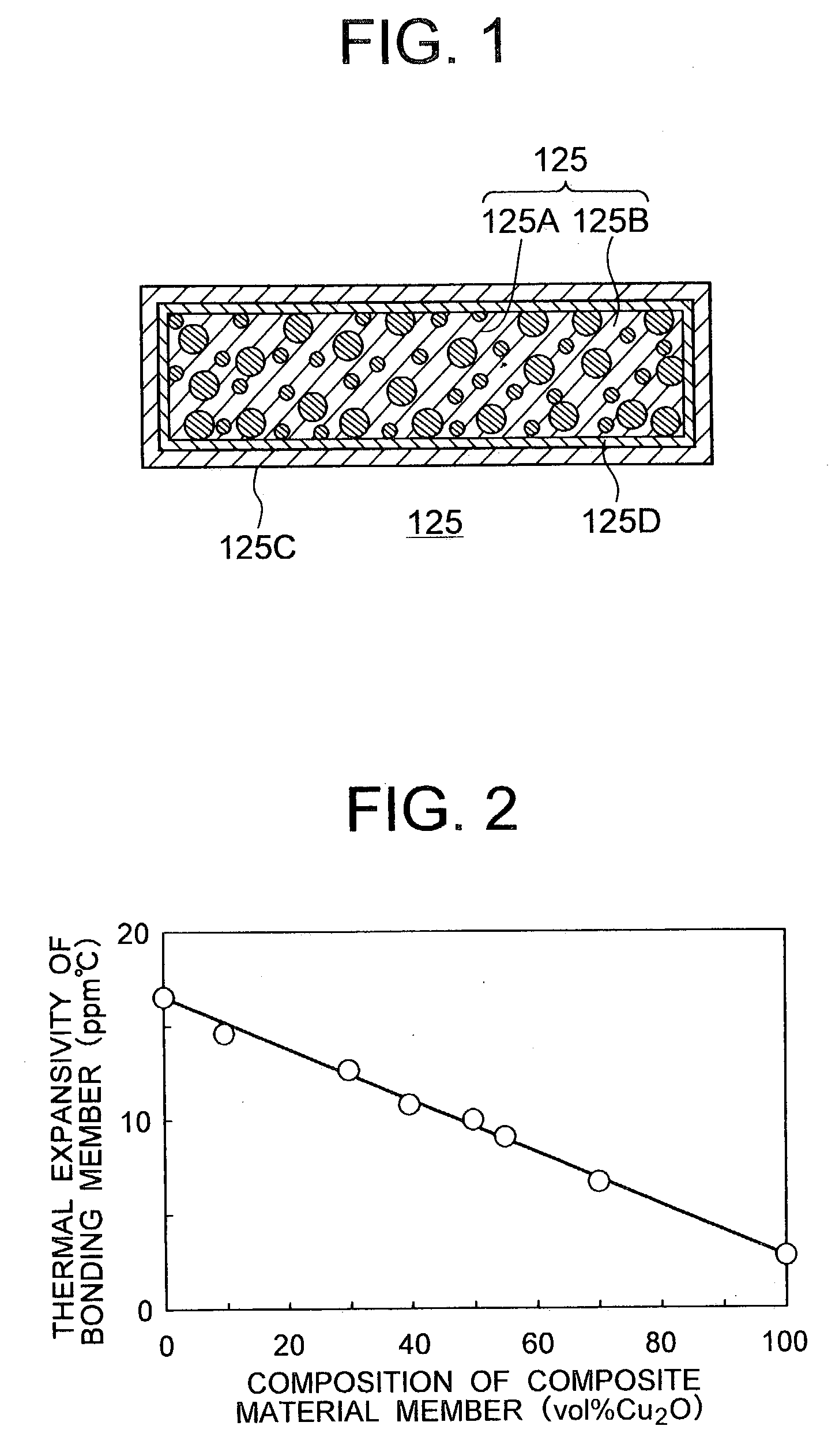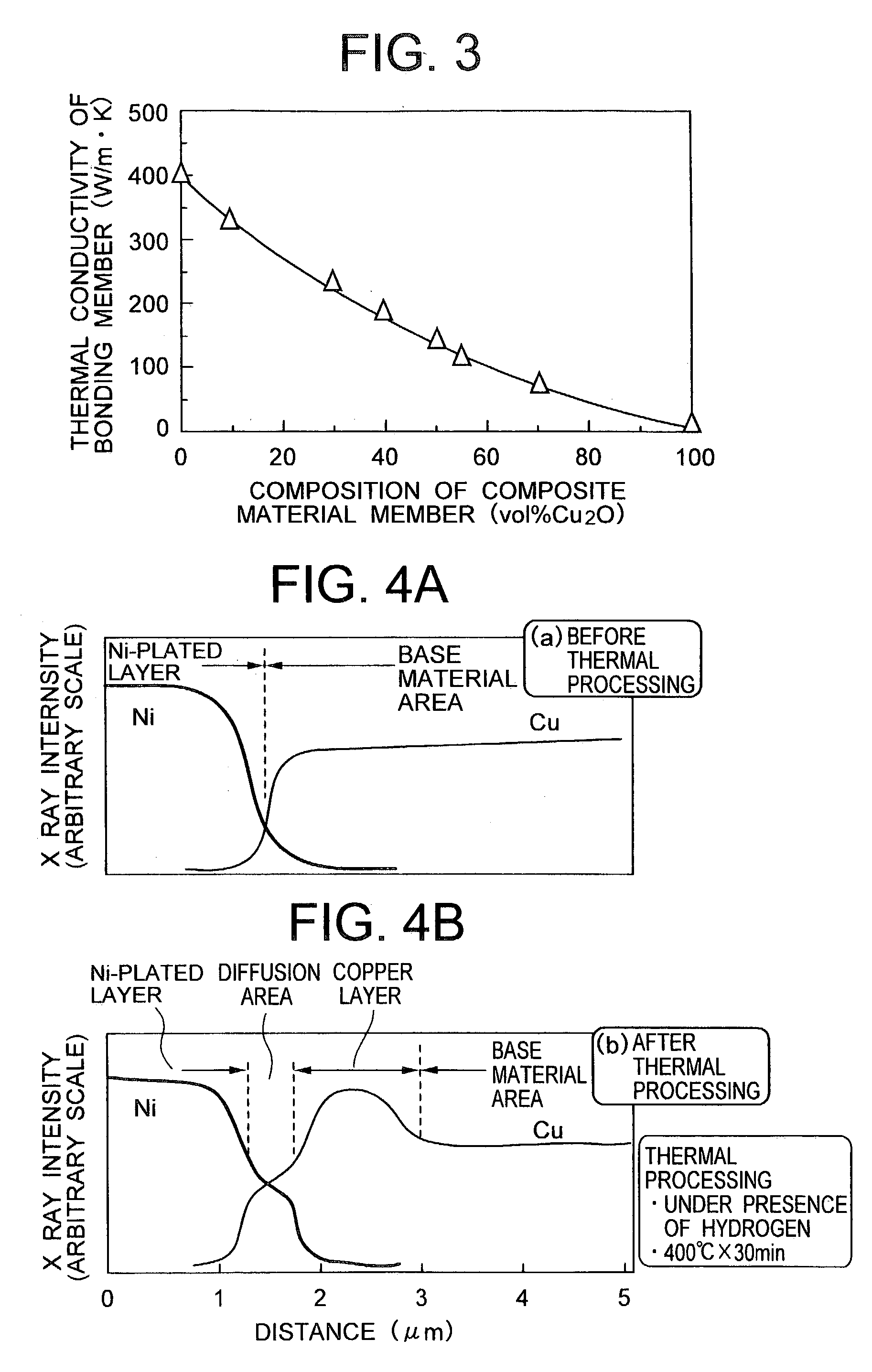Composite material member for semiconductor device and insulated and non-insulated semiconductor devices using composite material member
a semiconductor device and composite material technology, applied in the direction of layered products, transportation and packaging, chemical instruments and processes, etc., can solve the problems of reduced reliability based on the destruction of the solder layer, the device is repeatedly subject to thermal stress, and the cutoff of the heat pass
- Summary
- Abstract
- Description
- Claims
- Application Information
AI Technical Summary
Problems solved by technology
Method used
Image
Examples
embodiment 1
[0097] [Embodiment 1]
[0098] In this embodiment, a composite material member for semiconductor device will be described.
[0099] For a matrix material 125A in a composite material member for semiconductor device 125 of the present invention, copper(Cu, thermal conductivity: 403 W / m.K, thermal expansivity: 16.7 ppm / .degree. C.) is selected because of its high thermal conductivity. This property is significant in a sense that a heat flow emitted from a semiconductor substrate is efficiently released to the outside preferentially through a matrix area. However, the large thermal expansivity of copper poses a disadvantage in ensuring reliable integration with peripheral members of small thermal expansivity.
[0100] On the other hand, for particles 125B to be dispersed in the matrix material 125, cuprous oxide (Cu.sub.2O, thermal conductivity: 6.6 W / m.k)K, thermal expansivity: 2.7 ppm / .degree. C.) is selected because of its small thermal expansivity. The cuprous oxide particles 125B is operat...
embodiment 2
[0141] [Embodiment 2]
[0142] In this embodiment, the case will be described where the composite material member for semiconductor device is used as a supporting member of a ceramic insulated structure insulated semiconductor device.
[0143] FIG. 8 is an aerial view illustrating main parts of the insulated semiconductor device of the present invention, which shows a situation in which a ceramic insulating substrate and a semiconductor element substrate are solidly soldered to the composite material member 125 as a supporting member. The supporting member 125 is a composite metal member provided with the Ni-plated layer 125C (thickness: 5 .mu.m) thereon, and has properties such as thermal expansivity of 10.0 ppm / .degree. C. and thermal conductivity of 140 W / m.K. In order to obtain the above described properties, the supporting member 125 constitutes a composite material member with the Ni-plated layer 125C (thickness: 5 .mu.m) as a metal layer formed through the copper layer 125D (thickn...
embodiment 3
[0159] [Embodiment 3]
[0160] In this embodiment, the case will be described where the composite material member for semiconductor device is applied as an intermediate metal member of a resin insulation structure insulated semiconductor device.
[0161] FIGS. 19A to 19C are plan and sectional views and a circuit diagram, respectively for illustrating the insulated semiconductor device of one embodiment of the present invention. The insulated semiconductor device 900 has a configuration described below. The MOS FET element substrates 101 composed of Si (four, chip size: 7.times.7.times.0.28 mm) are mounted by solders 113 and 124 on the Al insulating circuit substrate 2 also serving as a supporting member through an intermediate metal member 40 having a size of 8.times.8.times.0.6 mm. The intermediate metal plate 40 comprises the composite material member of the present invention. The intermediate metal member 40 constitutes a composite material member with a metal layer 125C (Ni-plated la...
PUM
| Property | Measurement | Unit |
|---|---|---|
| thermal conductivity | aaaaa | aaaaa |
| thermal conductivity | aaaaa | aaaaa |
| thermal conductivity | aaaaa | aaaaa |
Abstract
Description
Claims
Application Information
 Login to View More
Login to View More - R&D
- Intellectual Property
- Life Sciences
- Materials
- Tech Scout
- Unparalleled Data Quality
- Higher Quality Content
- 60% Fewer Hallucinations
Browse by: Latest US Patents, China's latest patents, Technical Efficacy Thesaurus, Application Domain, Technology Topic, Popular Technical Reports.
© 2025 PatSnap. All rights reserved.Legal|Privacy policy|Modern Slavery Act Transparency Statement|Sitemap|About US| Contact US: help@patsnap.com



